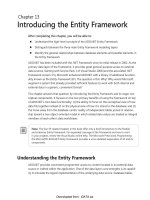Introducing sequences
Bạn đang xem bản rút gọn của tài liệu. Xem và tải ngay bản đầy đủ của tài liệu tại đây (731.46 KB, 69 trang )
KS3 Mathematics
A4 Sequences
1 of 27
© Boardworks Ltd 2004
Contents
A4 Sequences
A4.1 Introducing sequences
A4.2 Describing and continuing sequences
A4.3 Generating sequences
A4.4 Finding the nth term
A4.5 Sequences from practical contexts
2 of 27
© Boardworks Ltd 2004
Introducing sequences
In maths, we call a list of numbers in order a sequence.
Each number in a sequence is called a term.
4, 8, 12, 16, 20, 24, 28, 32, . . .
1st term
6th term
If terms are next to each other they are referred to as
consecutive terms.
When we write out sequences, consecutive terms are
usually separated by commas.
3 of 27
© Boardworks Ltd 2004
Infinite and finite sequences
A sequence can be infinite. That means it continues forever.
For example, the sequence of multiples of 10,
10, 20 ,30, 40, 50, 60, 70, 80, 90 . . .
is infinite. We show this by adding three dots at the end.
If a sequence has a fixed number of terms it is called a
finite sequence.
For example, the sequence of two-digit square numbers
16, 25 ,36, 49, 64, 81
is finite.
4 of 27
© Boardworks Ltd 2004
Sequences and rules
Some sequences follow a simple rule that is easy to describe.
For example, this sequence
2, 5, 8, 11, 14, 17, 20, 23, 26, 29, …
continues by adding 3 each time. Each number in this
sequence is one less than a multiple of three.
Other sequences are completely random.
For example, the sequence of winning raffle tickets in a
prize draw.
In maths we are mainly concerned with sequences of
numbers that follow a rule.
5 of 27
© Boardworks Ltd 2004
Naming sequences
Here are the names of some sequences which you may
know already:
2, 4, 6, 8, 10, . . .
Even Numbers (or multiples of 2)
1, 3, 5, 7, 9, . . .
Odd numbers
3, 6, 9, 12, 15, . . .
Multiples of 3
5, 10, 15, 20, 25 . . .
Multiples of 5
1, 4, 9, 16, 25, . . .
Square numbers
1, 3, 6, 10,15, . . .
Triangular numbers
6 of 27
© Boardworks Ltd 2004
Ascending sequences
When each term in a sequence is bigger than the one
before the sequence is called an ascending sequence.
For example,
The terms in this ascending sequence increase in equal
steps by adding 5 each time.
2,
7,
12, 17, 22, 27, 32, 37, . . .
+5
+5
+5
+5
+5
+5
+5
The terms in this ascending sequence increase in unequal
steps by starting at 0.1 and doubling each time.
0.1, 0.2, 0.4, 0.8, 1.6, 3.2, 6.4, 12.8, . . .
×2
7 of 27
×2
×2
×2
×2
×2
×2
© Boardworks Ltd 2004
Descending sequences
When each term in a sequence is smaller than the one
before the sequence is called a descending sequence.
For example,
The terms in this descending sequence decrease in equal
steps by starting at 24 and subtracting 7 each time.
24, 17, 10,
3, –4, –11, –18, –25, . . .
–7
–7
–7
–7
–7
–7
–7
The terms in this descending sequence decrease in
unequal steps by starting at 100 and subtracting 1, 2, 3, …
100, 99, 97, 94, 90, 85, 79, 72, . . .
–1
8 of 27
–2
–3
–4
–5
–6
–7
© Boardworks Ltd 2004
Sequences from real-life
Number sequences are all
around us.
Some sequences, like the ones
we have looked at today follow
a simple rule.
Some sequences follow more
complex rules, for example, the
time the sun sets each day.
Some sequences are completely random, like the sequence of
numbers drawn in the lottery.
What other number sequences can be made from real-life
situations?
9 of 27
© Boardworks Ltd 2004
Contents
A4 Sequences
A4.1 Introducing sequences
A4.2 Describing and continuing sequences
A4.3 Generating sequences
A4.4 Finding the nth term
A4.5 Sequences from practical contexts
10 of 27
© Boardworks Ltd 2004
Sequences from geometrical patterns
We can show many well-known sequences using geometrical
patterns of counters.
Even Numbers
2
4
6
8
10
5
7
9
Odd Numbers
1
11 of 27
3
© Boardworks Ltd 2004
Sequences from geometrical patterns
Multiples of Three
3
6
9
12
15
15
20
25
Multiples of Five
5
12 of 27
10
© Boardworks Ltd 2004
Sequences from geometrical patterns
Square Numbers
1
4
9
16
25
6
10
15
Triangular Numbers
1
13 of 27
3
© Boardworks Ltd 2004
Sequences with geometrical patterns
How could we arrange counters to represent the
sequence 2, 6, 12, 20, 30, . . .?
The numbers in this sequence can be written as:
1 × 2,
2 × 3,
3 × 4,
4 × 5,
5 × 6, . . .
We can show this sequence using a sequence of rectangles:
1 × 2 = 2 2 × 3 = 6 3 × 4 = 12 4 × 5 = 20
14 of 27
5 × 6 = 30
© Boardworks Ltd 2004
Powers of two
We can show powers of two like this:
21 = 2
22 = 4
23 = 8
24 = 16
25 = 32
26 = 64
Each term in this sequence is double the term before it.
15 of 27
© Boardworks Ltd 2004
Powers of three
We can show powers of three like this:
31 = 3
32 = 9
33 = 27
34 = 81
35 = 243
36 = 729
Each term in this sequence is three times the term before it.
16 of 27
© Boardworks Ltd 2004
Sequences that increase in equal steps
We can describe sequences by finding a rule that tells us
how the sequence continues.
To work out a rule it is often helpful to find the difference
between consecutive terms.
For example, look at the difference between each term in
this sequence:
3,
7,
+4
11,
+4
15
+4
19,
+4
23,
+4
27,
+4
31, . . .
+4
This sequence starts with 3 and increases by 4 each time.
Every term in this sequence is one less than a multiple of 4.
17 of 27
© Boardworks Ltd 2004
Sequences that decrease in equal steps
Can you work out the next three terms in this sequence?
22,
–6
16,
10,
–6
4,
–6
–2,
–6
–8, –14, –20, . . .
–6
–6
–6
How did you work these out?
This sequence starts with 22 and decreases by 6 each time.
Each term in the sequence is two less than a multiple of 6.
Sequences that increase or decrease in equal steps
are called linear or arithmetic sequences.
18 of 27
© Boardworks Ltd 2004
Sequences that increase in increasing steps
Some sequences increase or decrease in unequal steps.
For example, look at the differences between terms in this
sequence:
2,
6,
+1
8,
+2
11,
+3
15,
+4
20,
+5
26,
+6
33, . . .
+7
This sequence starts with 5 and increases by 1, 2, 3, 4, …
The differences between the terms form a linear sequence.
19 of 27
© Boardworks Ltd 2004
Sequences that decrease in decreasing steps
Can you work out the next three terms in this sequence?
7,
6.9,
–0.1
6.7,
–0.2
6.4,
–0.3
6,
–0.4
5.5,
–0.5
4.9, 4.2, . . .
–0.6
–0.7
How did you work these out?
This sequence starts with 7 and decreases by 0.1, 0.2, 0.3,
0.4, 0.5, …
With sequences of this type it is often helpful to find a second
row of differences.
20 of 27
© Boardworks Ltd 2004
Using a second row of differences
Can you work out the next three terms in this sequence?
1,
3,
+2
8,
+5
+3
16,
+8
+3
27,
+11
+3
41,
+14
+3
58,
+17
+3
78, . . .
+20
+3
Look at the differences between terms.
A sequence is formed by the differences so we look at the
second row of differences.
This shows that the differences increase by 3 each time.
21 of 27
© Boardworks Ltd 2004
Sequences that increase by multiplying
Some sequences increase or decrease by multiplying or
dividing each term by a constant factor.
For example, look at this sequence:
2,
4,
×2
8,
×2
16,
×2
32,
×2
64,
×2
×2
128, 256, . . .
×2
This sequence starts with 2 and increases by multiplying the
previous term by 2.
All of the terms in this sequence are powers of 2.
22 of 27
© Boardworks Ltd 2004
Sequences that decrease by dividing
Can you work out the next three terms in this sequence?
512, 256,
÷4
÷4
64,
16,
÷4
4,
÷4
1,
÷4
0.25, 0.125, . . .
÷4
÷4
How did you work these out?
This sequence starts with 512 and decreases by dividing
by 4 each time.
We could also continue this sequence by multiplying by
each time.
23 of 27
1
4
© Boardworks Ltd 2004
Fibonacci-type sequences
Can you work out the next three terms in this sequence?
1,
1,
2,
3,
5,
8,
13,
21,
34,
1+1
1+2
3+5
5+8
8+13
13+21
21+13
55, . . .
21+34
How did you work these out?
This sequence starts 1, 1 and each term is found by
adding together the two previous terms.
This sequence is called the Fibonacci sequence after the
Italian mathematician who first wrote about it.
24 of 27
© Boardworks Ltd 2004
Describing and continuing sequences
Here are some of the types of sequence you may come
across:
Sequences that increase or decrease in equal steps.
These are called linear or arithmetic sequences.
Sequences that increase or decrease in unequal steps
by multiplying or dividing by a constant factor.
Sequences that increase or decrease in unequal steps
by adding or subtracting increasing or decreasing numbers.
Sequences that increase or decrease by adding together
the two previous terms.
25 of 27
© Boardworks Ltd 2004









